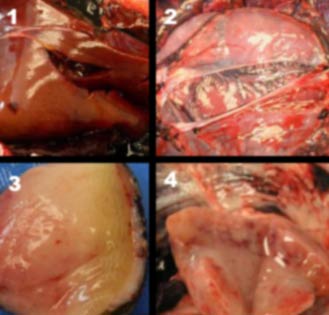– Mysterious mass death of Baikal earless seals puzzles scientists (VIDEO):
Dozens of dead Baikal earless seals have been found on the shores of the world’s deepest lake in the last six days. While an epidemic has been ruled out, lab samples haven’t shown conclusively what led to the mysterious mass deaths.
The government of the Siberian region of Irkutsk said that starting October29, the bodies of 141 dead Baikal earless seals had been recovered and a special commission to look into the causes of death had been launched. All the bodies belonged to adult animals, with 80 percent of them being pregnant females, the statement added. Initially, the Russian Environmental Ministry excluded the human factor, saying natural causes were to blame.
Lab research did not reveal any abnormality, infectious diseases or parasites in the 31 collected samples. To see whether toxins triggered the deaths, researchers will need to carry out a molecular probe.
Read moreMysterious mass death of Baikal earless seals puzzles scientists (VIDEO)

